Rolling Stock - II
On this pageFreight Wagons
Q. What are loading gauge restrictions (maximum dimensions) on IR wagons?
Please see the latest 2004 standards for rolling stock dimensions. The 1971 standards for rolling stock dimensions can be seen here and the older 1929 standards are available here. Also of potential interest in this connection are the dimensions of tracks.
Q. How are freight cars classified by IR?
The following codes are used now for classifying freight cars. The classification scheme is not entirely systematic. Some older wagons especially have codes that are not easily explained in this way. But in general an optional gauge code is followed by a type code which is followed by an indication of the coupler and whether the wagon is air-braked.
Gauge code
- M: (prefix) MG
- N: (prefix) NG
Wagon type code
- B: (prefix) Bogie wagon
- BV: Brake van
- V: Brake/parcel van
- O: Open wagon (gondola)
- C: Covered wagon (boxcar)
- F: Flat car
- FK: Flat car for container transport
- FU: Well wagon
- LA: Low flat car with standard buffer height
- LB: Low flat car with low buffer height
- LAB: Low flat car, one end with low buffers, the other with high buffers
- R: Rail-carrying wagon
- T: Tanker (additional letters indicate material carried)
- U: Well wagon
- W: Well wagon
- K: Open wagon: ballast /material /refuse transport (older wagons)
- C: Centre discharge
- S: Side discharge
- R: Rapid (forced) discharge, bottom discharge
- X: Both centre and side discharge
- X: (also?) High sided
- Y: Low (medium?) side walls
- L: Low sided
- H: Heavy load
Following the type code in the classification code a letter may denote the type of coupler, nowadays optional, as all new freight cars are fitted with centre buffer couplers (CBC). An ’N’ suffix is for ‘pneumatic’, or air-braked wagons. Newer stock that is air-braked also has CBC couplers, so the ‘C’ is usually dropped. E.g., BOXN for air-braked BOX wagons, not BOXCN.
Coupler, brake, and other suffixes
- C: Centre buffer coupler (CBC)
- R: Screw coupling only
- T: Transition coupler (CBC with additional side buffers and screw coupling)
- N: Air-braked
- M: (suffix) Military
BOXNHL, the most common type of open wagon, is made of stainless steel, but otherwise most wagons are constructed using steel. Some special steel alloys are used to reduce corrosion, as on the BOXNCR (with IRS M44 steel), but these are rare and not produced in large numbers.
In late 2004, IR began looking into using steel substitutes, and plans were drawn up for the production of aluminium-body wagons (BOBNAL, BOBRAL). Initial estimates were upto 750 wagons in 2005-2006, including some surprisingly in a 4-wheel design. The tare weight was expected to be reduced by about 4.2 tonnes. Other than some trial wagons, these never enter production.
Recently (12/2018), there has been talk about reviving these aluminium-body wagons, but no actual production has taken place.
As seen in the permanent way section, many BG routes (especially on SER, SECR, ECoR, etc.) have rails that allow axle loads of up to 25t, but most other routes operate with a restricted axle load of 22.5t to 23.9t.
Notes on select freight wagons
Note: The listing here is not exhaustive and omits many minor revisions and variants. For obselete stock and wagons not in use, see below.
The predominant high-sided bogie open wagon on IR. It replaced the original BOX during the early 2000s. Featuring AAR 'E' high-tensile coupler with high-capacity draft gear, CASNUB 22 NLB cast steel bogies with cartridge tapered roller bearings. Air brakes and parking brakes. Rated speed 80km/h (some older ones were rated at 75km/h), these are used for bulk movement of material commodities (coal, iron ore, stone etc.).
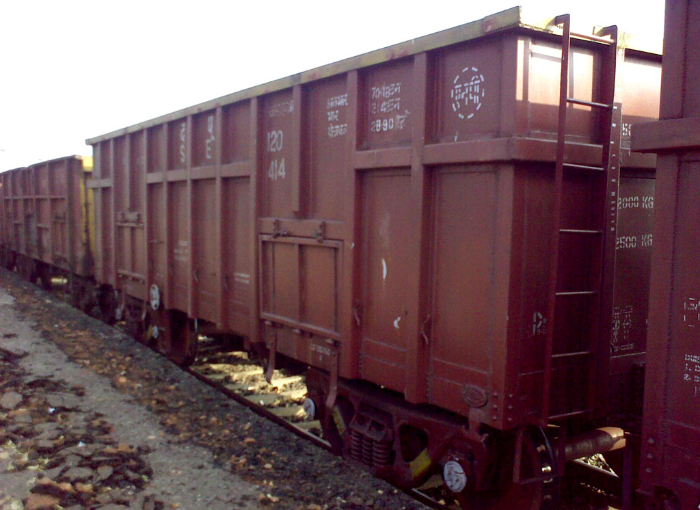
| Max. axle load | 20.32t |
| Spring grouping per bogie - outer | 12 |
| Spring grouping per bogie - inner | 8 |
| Tare | 22.47t |
| Payload (RDSO spec.) | 58.81t |
| Payload (revised, incl. tolerance) | 64+2 = 66t (RC 13/2007) |
| Gross load (RDSO spec., excl. tolerance) | 81.28t |
| Gross load (revised, incl. tolerance) | 86.47+2 = 88.47t |
| Capacity | 56.3m3 |
| Width | 3.2m |
| Height | 3.225m |
| Length over headstock | 9.784m |
| Length over coupler faces | 10.71m |
| Distance between bogie centres | 6.524m |
| Standard rake size | 58 |
| Total train load (incl. BVZC, RDSO spec., excl. tolerance) | 4809.3t |
| Total train load (incl. BVZC, CC+8+2) | 5399.32 (BOXNM1) A.L. - 22.9 tt |
| Total train load (incl. BVZC, revised, incl. tolerance) | 5233.53t |
| RDSO design speed (loaded) | 60 (CC+8+2), 75 (CC) |
| RDSO design speed (empty) | 80 (CC+8+2), 80 (CC) |
| CRS sanctioned speed (loaded, SER) | 60km/h (CC+8+2), 75km/h (CC) |
| CRS sanctioned speed (empty, SER) | 80km/h (CC+8+2), 80km/h (CC) |
Variants
BOXN-M1: Featuring a higher 22.2t axle load. The bogie frames are painted with a yellow band for easier identification.
BOXN-R: Rehabilated BOXN with stainless steel body. They have a higher 22.9t axle load. Height is increased by 177mm over regular BOXN. As a result, carrying capacity increases by 6t.
BOXN-CR: Corrosion-resistant BOXN wagons built with 3CR12 stainless steel (a proprietary version of grade 409 stainless steel). There are very few of these in circulation.
BOXN-AL: Aluminium body on top of a steel underframe. The aluminium alloy is 'RDE-40', also used in the BOBR-AL wagons. These wagons are naturally lighter and allow a higher payload to be carried for the same axle load.
The BOXN-HA type is a BOXN variant with improved bogies and higher capacity, fit for 100km/h. (Suffix 'HA' = 'high axle load'.) Uses IRF 108HS cast steel bogies with secondary suspension, CBC couplers, and single-pipe air brakes. The wagon is similar to the BOXN wagon in length and width, but taller by 225mm. Rake loads rise to 3783t from the 3411t of ordinary BOXN wagons.
These wagons were designed for higher speed (100km/h) operations with higher axle loads (22.1t for coal, 23.5t for iron ore). 301 of these wagons were produced between Nov. 1999 and March 2000 and at first allocated to the Hospet - Chennai section. However, the track on this section could not handle the higher axle loads (the wagons required 52kg 90 UTS rails) and upgrade plans were dropped, so the decision was made to run the BOXN-HA wagons with reduced loading and stop the manufacture of more of them. About 400 more of them were eventually manufactured before production was halted permanently. RDSO later developed the BOXN-HS variants (see below) which later became more widely used for high-speed iron ore and coal loads. BOXN-HA production has not resumed although now many main line sections have 60kg rails and are quite capable of handling the wagons' higher axle loads. It appears that the poor condition of some bridges and other track structures may have been the reason behind halting the BOXN-HA production.
| Max. axle load | 22.9t (Some variants 23.5t) |
| Spring grouping per bogie - outer | 14 |
| Spring grouping per bogie - inner | 14 |
| Tare | 23.17t |
| Payload (RDSO spec.) | 65.23t |
| Payload (revised, incl. tolerance) | 66+2 = 68t (RC 102/2007) |
| Gross load (RDSO spec., excl. tolerance) | 88.40t |
| Gross load (revised, incl. tolerance) | 91.17t |
| Capacity | NA |
| Width | 3200mm |
| Height | 3450mm |
| Length over headstock | 9780mm |
| Length over coupler faces | 10713mm |
| Distance between bogie centres | NA |
| Standard rake size (2007) | 58 |
| Total train load (incl. BVZC, RDSO spec., excl. tolerance) | 5229.4t |
| Total train load (incl. BVZC, CC+8+2) | NA |
| Total train load (incl. BVZC, revised, incl. tolerance) | 5392.8t |
| RDSO design speed (loaded) | 60km/h (22.9t), 100km/h (20.32t) |
| RDSO design speed (empty) | 65km/h (22.9t), 100km/h (20.32tkm/h |
| CRS sanctioned speed (loaded, SER) | UP (22.9t), 75km/h (20.32t) |
| CRS sanctioned speed (empty, SER) | UP (22.9t), 100km/h (20.32t) |
BOXN-HS wagons are BOXN wagons fitted with CASNUB HS high-speed bogies raising the max. speed to 100km/h. Developed by RDSO after the BOXN-HA wagons didn't work out; it has a 8% lower capacity compared to the BOXN-HA. These wagons are now dominant, with IR replacing normal BOXN with this variant in capacity planning and production targets. Many BOXN-HS wagons were seen (08/2005) with a name, 'Pragati', stenciled on them. It is not known whether these represent some sort of class name or a variant design.
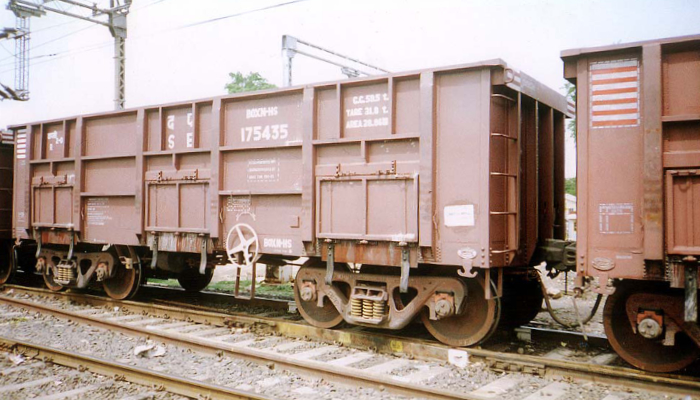
| Max. axle load | 20.32t |
| Spring grouping per bogie - outer | 14 |
| Spring grouping per bogie - inner | 12 |
| Tare | 23.2t |
| Payload (RDSO spec.) | 58.08t |
| Payload (revised, incl. tolerance) | 64+2 = 66t (RC 13/2007) |
| Gross load (RDSO spec., excl. tolerance) | 81.28t |
| Gross load (revised, incl. tolerance) | 86.47+2 = 88.47t |
| Capacity | 56.29m3 |
| Width | 3200mm |
| Height | 3233mm |
| Length over headstock | 9784mm |
| Length over coupler faces | 10713mm |
| Distance between bogie centres | 6524mm |
| Standard rake size (2007) | 58 |
| Total train load (incl. BVZC, RDSO spec., excl. tolerance) | 4809.32t |
| Total train load (incl. BVZC, CC+8+2) | 5399.32 (BOXNHSM1) A.L. - 22.9 tt |
| Total train load (incl. BVZC, revised, incl. tolerance) | 5233.53t |
| RDSO design speed (loaded) | 60km/h (CC+8+2), 100km/h (CC) |
| RDSO design speed (empty) | 65km/h (CC+8+2), 100km/h (CC) |
Variants
BOXN-HS M1: 22.82t axle load. Bogie frame painted with a yellow band.
BOXN-HL wagons are like BOXN-HS wagons but made of stainless steel and cold rolled sections. 250mm longer, 76mm higher and 50mm wider. Air-braked, CBC couplers, roller bearings.
| Max. axle load | 22.9t |
| Spring grouping per bogie - outer | 14 |
| Spring grouping per bogie - inner | 14 |
| Tare | 20.6t |
| Payload (RDSO spec.) | 71.0t |
| Payload (revised, incl. tolerance) | 70t (RC 29/2009) |
| Gross load (RDSO spec., excl. tolerance) | 91.6t |
| Gross load (revised, incl. tolerance) | 90.6t |
| Capacity | 61.05m3 |
| Width | 3250mm |
| Height | 3301mm |
| Length over headstock | 10034mm |
| Length over coupler faces | 10963mm |
| Distance between bogie centres | 6690mm |
| Standard rake size (2007) | 58 |
| Total train load (incl. BVZC, RDSO spec., excl. tolerance) | 5326.6t |
| Total train load (incl. BVZC, CC+8+2) | NA |
| Total train load (incl. BVZC, revised, incl. tolerance) | 5268.6t |
| RDSO design speed (loaded) | 75km/h |
| RDSO design speed (empty) | 100km/h |
The BOXN-LW wagons are low-tare-weight BOXN wagons ('LW' = 'low weight'). The tare weight is reduced by 1.8t compared to BOXN wagons, and the payload correspondingly increased by the same amount. This wagon has a stainless steel body to reduce corrosion. They are all air-braked, CBC couplers with roller bearings. Wider by 50mm over standard BOXN.
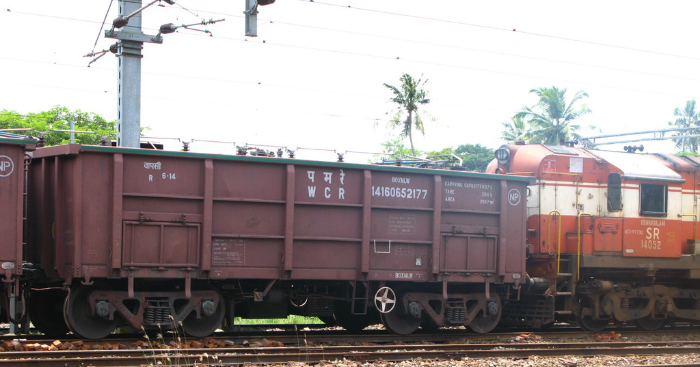
| Max. axle load | 20.32t |
| Spring grouping per bogie - outer | 12 |
| Spring grouping per bogie - inner | 8 |
| Tare | 20.41t |
| Payload (RDSO spec.) | 63.02t |
| Gross load (RDSO spec.) | 81.28t |
| Capacity | 61.09m3 |
| Width | 3250mm |
| Height | 3341mm |
| Length over headstock | 9784mm |
| Length over coupler faces | 10713mm |
| Distance between bogie centres | 6524mm |
| Standard rake size | 58 |
| RDSO design speed (loaded) | 100km/h |
| RDSO design speed (empty) | 100km/h |
The BOXN-EL wagons are BOXN wagons with ‘enhanced loading’ features, designed for transporting coal, ores, etc. They have a 25t axle load, CASNUB 22NLC bogies, CBC couplers and single-pipe graduated release air brake system. The body is often painted with an olive green band.
| Max. axle load | 25t |
| Spring grouping per bogie - outer | 14 |
| Spring grouping per bogie - inner | 14 |
| Tare | 22.47t |
| Payload (RDSO spec.) | 75.73t |
| Payload (revised, incl. tolerance) | 75+2 = 77t (RC 109/2007) |
| Gross load (RDSO spec., excl. tolerance) | 98.0t |
| Gross load (revised, incl. tolerance) | 99.47t |
| Capacity | 56.29m3 |
| Width | 3200mm |
| Height | 3233mm |
| Length over headstock | 9784mm |
| Length over coupler faces | 10713mm |
| Distance between bogie centres | 6524mm |
| Standard rake size (2007) | 58 |
| Total train load (incl. BVZC, RDSO spec., excl. tolerance) | 5795.8t |
| Total train load (incl. BVZC, CC+8+2) | NA |
| Total train load (incl. BVZC, revised, incl. tolerance) | 5882.5t |
| RDSO design speed (loaded) | 45+5km/h |
| RDSO design speed (empty) | 60+5km/h |
Variants
BOXN-25M: These were not variants in the strictest sense. The Golden Rock Workshops made a batch of them as a precursor to serial production of the -EL type. These featured swing motion bogies which the production versions don't have.
Low-sided bogie open wagon with no doors. 93.7 tonne load. Used mainly for iron ore transport, though can be sometimes be seen hauling coal. They are now rare, being supplanted by the -EL version (see below).
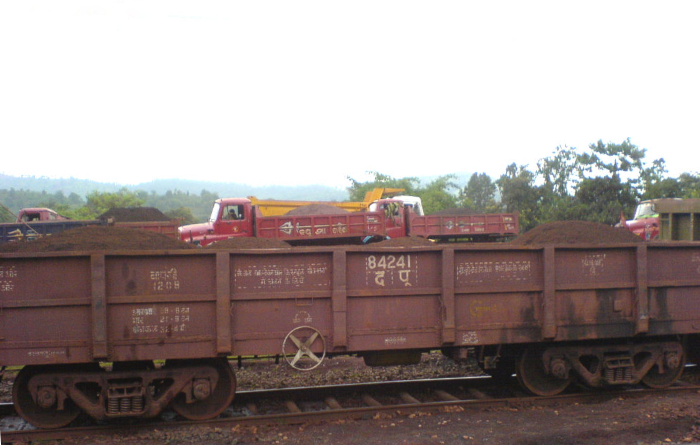
| Max. axle load | 22.9t |
| Spring grouping per bogie - outer | 14 |
| Spring grouping per bogie - inner | 10 |
| Tare | 20.71t |
| Payload (RDSO spec.) | 71.49t |
| Payload (revised, incl. tolerance) | 72+1 = 73t (RC 13/2007) |
| Gross load (RDSO spec., excl. tolerance) | 92.2t |
| Gross load (revised, incl. tolerance) | 92.71+1 = 93.71t |
| Capacity | NA |
| Width | NA |
| Height | NA |
| Length over headstock | NA |
| Length over coupler faces | NA |
| Distance between bogie centres | NA |
| Standard rake size (2007) | 52 |
| Total train load (incl. BVZC, RDSO spec., excl. tolerance) | 4900.4t |
| Total train load (incl. BVZC, CC+8+2) | NA |
| Total train load (incl. BVZC, revised, incl. tolerance) | 4980.43t |
| RDSO design speed (loaded) | 65km/h |
| RDSO design speed (empty) | 80km/h |
| CRS sanctioned speed (loaded, SER) | UP (22.9t ) 65km/h (20.32t) |
| CRS sanctioned speed (empty, SER) | UP (22.9t ) 80km/h (20.32t) |
‘Enhanced Loading’ version of the low-sided bogie open wagon BOY. Max. 25t axle load, 99.7 tonne gross load. Similar to BOY, has no doors. Most have an olive green band running the length of the body. Found mainly in the mining dominated regions of SECR and ECoR.
| Max. axle load | 25t |
| Spring grouping per bogie - outer | 14 |
| Spring grouping per bogie - inner | 14 |
| Tare | 20.71t |
| Payload (RDSO spec.) | 77.29t |
| Payload (revised, incl. tolerance) | 77+2 = 79t (RC 109/2007) |
| Gross load (RDSO spec., excl. tolerance) | 98.0t |
| Gross load (revised, incl. tolerance) | 99.7t |
| Capacity | 37.8m3 |
| Width | 3134mm |
| Height | 2450mm |
| Length over headstock | 11000mm |
| Length over coupler faces | 11929mm |
| Distance between bogie centres | 7330mm |
| Standard rake size (2007) | 52 |
| Total train load (incl. BVZC, RDSO spec., excl. tolerance) | 5207.8t |
| Total train load (incl. BVZC, CC+8+2) | NA |
| Total train load (incl. BVZC, revised, incl. tolerance) | 5297.9t |
| RDSO design speed (loaded) | 45+5km/h |
| RDSO design speed (empty) | 60+5km/h |
An open bogie wagon for carrying finished steel products, but also used for coal, stone, etc. Features a strengthened underframe to sustain heavier point loads. CASNUB 22 NLB bogies, with non-transition CBC.
| Max. axle load | 20.32t |
| Spring grouping per bogie - outer | 12 |
| Spring grouping per bogie - inner | 8 |
| Tare | 25t |
| Payload (RDSO spec.) | 56.28t |
| Payload (revised, incl. tolerance) | 61+2 = 63t (RC 13/2007) |
| Gross load (RDSO spec., excl. tolerance) | 81.28t |
| Gross load (revised, incl. tolerance) | 86+2 = 88t |
| Capacity | NA |
| Width | 3.1m |
| Height | 3.08m |
| Length over headstock | 12.8m |
| Length over coupler faces | NA |
| Distance between bogie centres | 8.8m |
| Standard rake size (2007) | 43 |
| Total train load (incl. BVZC, RDSO spec., excl. tolerance) | 3508.84t |
| Total train load (incl. BVZC, CC+8+2) | NA |
| Total train load (incl. BVZC, revised, incl. tolerance) | 3797.8t |
| RDSO design speed (loaded) | 60km/h (CC+6+2), 75km/h (CC) |
| RDSO design speed (empty) | 65km/h (CC+6+2), 80km/h (CC) |
Variants
BOST-HS: Higher speed version, featuring CASNUB HS bogies. Maximum speed of 100kmph, both loaded and empty.
The BCNA wagon, also known as 'BCN/A', is a variant of the BCN design was developed to be less long but increased height to keep the capacity the same. It has welded construction compared to the original BCN which was riveted. BCNA wagons are covered bogie wagons (capable of being made water-tight for delicate commodities) with cartridge tapered roller bearings, cast steel bogie, air brakes. Two doors on each side. Uses BCN design's 2-tonne overload capacity. These are by far the most common covered wagon on IR.
AAR 'E' high-tensile coupler with high-capacity draft gear. CASNUB 22 NLB cast steel bogies. Snubbers and nested coil springs under bolster, elastomeric pads, etc., with secondary suspension system. Air brakes and parking brakes. Rated for 80km/h.
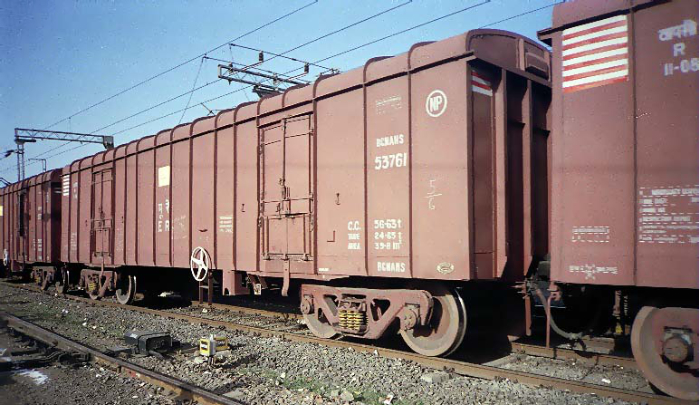
| Max. axle load | 20.32t |
| Spring grouping per bogie - outer | 12 |
| Spring grouping per bogie - inner | 8 |
| Tare | 24.55t |
| Payload (RDSO spec.) | 56.73t |
| Payload (revised, incl. tolerance) | 63+1 = 64t (RC 13/2007) |
| Gross load (RDSO spec., excl. tolerance) | 81.28t |
| Gross load (revised, incl. tolerance) | 88.55t |
| Capacity | 106.5m3 |
| Width | 3200mm |
| Height | 4017mm |
| Length over headstock | 13521m |
| Length over coupler faces | 14450mm |
| Distance between bogie centres | 9500 |
| Standard rake size (2007) | 43 |
| Total train load (incl. BVZC, RDSO spec., excl. tolerance) | 3508.8t |
| Total train load (incl. BVZC, CC+8+2) | 3852.8 (CC+6+2) (BCNAM1) A.L. - 22.9t |
| Total train load (incl. BVZC, revised, incl. tolerance) | 3555.8t |
| RDSO design speed (loaded) | 60km/h (CC+6+2), 80km/h (CC) |
| RDSO design speed (empty) | 80km/h (CC+6+2), 80km/h (CC) |
Variants
BCNA-HS: Featuring CASNUB 22 HS high-speed bogies raising the max. speed to 100km/h. These wagons are characterised by a patch of red/white horizontal stripes on the top left.
Newest BCN variant, both taller and wider, but shorter in length with a curved roof to maintain volumetric space. Stainless steel body. Has sliding doors to enable easier loading and unloading. CASNUB 22 HS bogies make for 100kmph operations. 22.9t axle load. Many feature a bright blue livery.
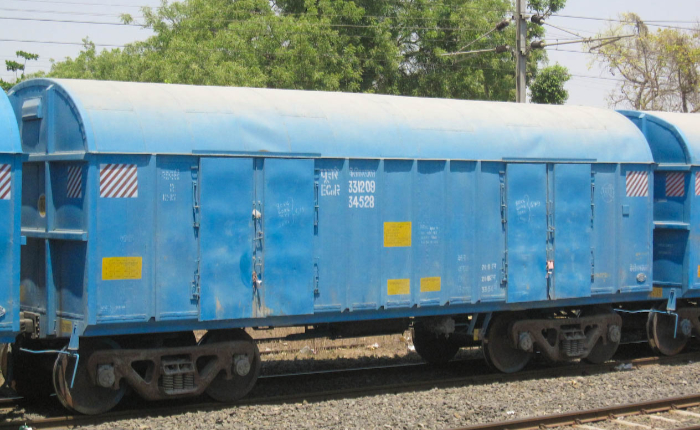
| Max. axle load | 22.9t |
| Tare | 20.8t |
| Payload | 70.8t |
| Gross load | 91.6t |
| Capacity | 92.54m3 |
| Width | 3450mm |
| Height | 4305mm |
| Length over headstock | 10034m |
| Length over coupler faces | 10963mm |
| Distance between bogie centres | 7153mm |
| Standard rake size | 58 |
| Total train load | 4106t |
| RDSO design speed | 100km/h |
Succesor to the bulk cement and fly ash carrying BCCW wagon (though these are still in use). Loading is through ports on the top, unloading via chutes at the bottom between the bogies. There are two versions of this design. The fly ash version has a max axle load of 17.75t; cement version has axle load of 22.32t. CBC, air-braked with a tapered roof.
| Fly Ash | Cement | |
|---|---|---|
| Max. axle load | 17.75t | 22.32t |
| Tare | 22t | 22t |
| Payload | 49t | 67.3t |
| Gross load | 71t | 89.3t |
| Capacity | 72.8m3 | 72.8m3 |
| Width | 3245mm | 3245mm |
| Height | 4165mm | 4165mm |
| Length over headstock | 9784mm | 9784mm |
| Length over coupler faces | 10713mm | 10713mm |
| Distance between bogie centres | 6684mm | 6684mm |
| Standard rake size | 58 | 58 |
| Total train load | 2842t | 3904t |
| RDSO design speed | 65km/h | 65km/h |
Successor to the BOBS wagon, these are open hopper cars with side discharge (often used for ballast and ores) Similar to the BOBR/BOBRN wagons, except that the discharge is to the side (clear of the tracks). Underside doors on the wagons are operated pneumatically, and can be controlled by a lineside triggering mechanism. CASNUB 22 NLB cast steel bogies, rated for 100km/h. The original BOBS wagons were vaccum braked.
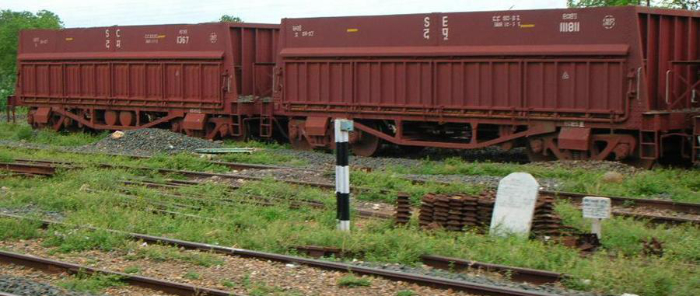
| Max. axle load | 22.9t |
| Spring grouping per bogie - outer | 14 |
| Spring grouping per bogie - inner | 14 |
| Tare | 30t |
| Payload (RDSO spec.) | 61.6t |
| Gross load | 91.6t |
| Capacity | 34m3 |
| Width | 3020mm |
| Height | 3301mm |
| Length over headstock | 10668mm |
| Length over coupler faces | 11597mm |
| Distance between bogie centres | 7112mm |
| Standard rake size (2007) | 53 |
Variants
BOBSN-M1: Higher max axle load of 25t. Payload increases to 70t.
Open hopper car with rapid (pneumatic) bottom discharge doors, air-braked, CASNUB 22 NLB cast steel bogies. BOBRN are most often used for carrying coal to thermal power plants, and also for ore, stone, track ballast, etc. Each wagon holds some 60t of coal loaded from the top and unloaded from the bottom by means of the pneumatically operated doors. The contents of the wagon can be discharged completely in about 15 seconds.
The door-opening mechanism is triggered by lineside devices running on a 24V or 32V DC source. As the wagons in a rake pass by the triggering devices, their doors open and their contents are unloaded into the pits below the tracks (the 'merry-go-round' system). The versions used by the power plants have 12 bottom doors, whereas IR uses variants that have 8 doors.
The original version of this wagon was classified as BOBR. They had vacuum brakes and were rated for lower speeds (80km/h). BOBRN were designed in 1991 to be shorter so as to increase rake length (53 for BOBR to 58 for BOBRN).
| Max. axle load | (CC+6+2)UP(CC) 20.32t |
| Spring grouping per bogie - outer | (CC+6+2)UP(CC) 12 |
| Spring grouping per bogie - inner | (CC+6+2)UP(CC) 8 |
| Tare | (CC+6+2)UP (CC) 25.6t |
| Payload (RDSO spec.) | (CC+6+2)UP(CC) 55.68t |
| Payload (revised, incl. tolerance) | (CC+6+2)UP(CC) 60 +2 = 62t (RC 13/2007 ) |
| Gross load (RDSO spec., excl. tolerance) | (CC+6+2)UP(CC) 81.28t |
| Gross load (revised, incl. tolerance) | (CC+6+2)UP(CC) 85.6+2 = 87.6tt |
| Capacity | 57.2m3 |
| Width | 3.5m |
| Height | 3.735m |
| Length over headstock | 9.671m |
| Length over coupler faces | 10.6m |
| Distance between bogie centres | 6.79m |
| Standard rake size (2007) | (CC+6+2)UP(CC) 58 |
| Total train load (incl. BVZC, RDSO spec., excl. tolerance) | UP(CC) (CC+6+2) 4809.32t |
| Total train load (incl. BVZC, CC+8+2) | UP(CC) 5281.32t (CC+6+2) A.L. -22.9 tt |
| Total train load (incl. BVZC, revised, incl. tolerance) | (CC+6+2)UP(CC) 5182.2t |
| RDSO design speed (loaded) | UP (CC) 60km/h (CC+6+2) 75km/h (CC) |
| RDSO design speed (empty) | UP (CC) 70km/h (CC+6+2) 70km/h (CC) |
| CRS sanctioned speed (loaded, SER) | (CC+6+2)UP(CC) 60km/h (CC+6+2)UP(CC) |
| CRS sanctioned speed (empty, SER) | (CC+6+2)UP(CC) 65km/h (CC+6+2)UP(CC) |
Variants
BOBRN-M1: Higher axle load version (22.32t).
BOBRN-HS: Featuring high-speed CASNUB HS bogies for 100km/h operations.
BOBRN-HS-M1: Featuring a modified high-speed CASNUB HS bogies to enable a higher axle load of 22.9t. Speed is restricted to 65km/h.
BOBRN-EL: ‘Enhanced Capacity’ version. CASNUB 22 NLC bogies, 25t axle load. Top speed is 45km/h.
BOBR-AL: Underframe is made of steel while the rest of the body is made of aluminium. The maximum axle load is the same as that of the regular BOBRN (20.32t), but the tare weight is reduced by 3.2t. The aluminium alloy used is 'RDE-40', and has 4% zinc, 2% magnesium, 0.35% manganese, and 0.15% zirconium
Open hopper car with chutes on sides and bottom for discharge. Mainly used for carrying track ballast, other kinds of crushed stone etc. Designed in 1996, with Casnub 22 NLB bogies and enhanced springs. Axle load of 20.32t, they succeeded the vaccum braked BOBY.
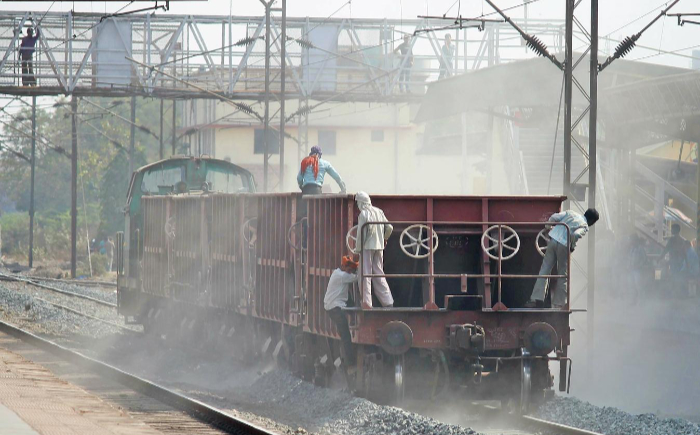
| Max. axle load | 20.32t |
| Spring grouping per bogie - outer | 12 |
| Spring grouping per bogie - inner | 8 |
| Tare | 26.78t |
| Payload (RDSO spec.) | 54.5t |
| Payload (revised, incl. tolerance) | 59+2 = 61t (RC 13/2007 ) |
| Gross load (RDSO spec., excl. tolerance) | 81.28t |
| Gross load (revised, incl. tolerance) | 85.78+2 = 87.78t |
| Capacity | NA |
| Width | NA |
| Height | 3.05m |
| Length over headstock | 10.718m |
| Length over coupler faces | 12m |
| Distance between bogie centres | 7.47m |
| Standard rake size (2007) | 52 |
| Total train load (incl. BVZC, RDSO spec., excl. tolerance) | 4321.64t |
| Total train load (incl. BVZC, CC+8+2) | NA |
| Total train load (incl. BVZC, revised, incl. tolerance) | 4666.14t |
| RDSO design speed (loaded) | 75km/h |
| RDSO design speed (empty) | 75km/h |
| CRS sanctioned speed (loaded, SER) | - |
| CRS sanctioned speed (empty, SER) | - |
Variants
BOBYN-HS: Featuring CASNUB-HS bogies for 100km/h operations.
BOBYN 22.9: Variant with 22.9t axle load. Rated for 65km/h.
Bogie covered hopper wagon especially for bulk carrying food grain. Loading via ports on top with bottom discharge chutes. Axle load of 21.82t. Featuring a modified CASNUB 22 HS bogie, with max. speed of 75km/h.
| Max. axle load | 21.82t |
| Tare | 26.44t |
| Payload (RDSO spec.) | 60.84t |
| Gross load (RDSO spec., excl. tolerance) | 87.28t |
| Capacity | 81.76m3 |
| Width | 3250mm |
| Height | 4260mm |
| Length over headstock | 11861mm |
| Length over coupler faces | 12790mm |
| Distance between bogie centres | 8661mm |
| Standard rake size | 49 |
| Total train load | 2981t | RDSO design speed (loaded) | 75km/h |
| RDSO design speed (empty) | 75km/h |
Bi-level automobile carrier converted from BLC container flat wagons with partial perforated side walls. Deck is fixed. Max axle load: A wagon - 8.28t, B wagon - 7.90t. Body made from IS:2062 steel with a floor height of 1009mm. 6 medium sized automobiles in both A and B type wagons. 45 wagons in the entire rake for a total of 270 cars. Loading and unloading via manual ramps.
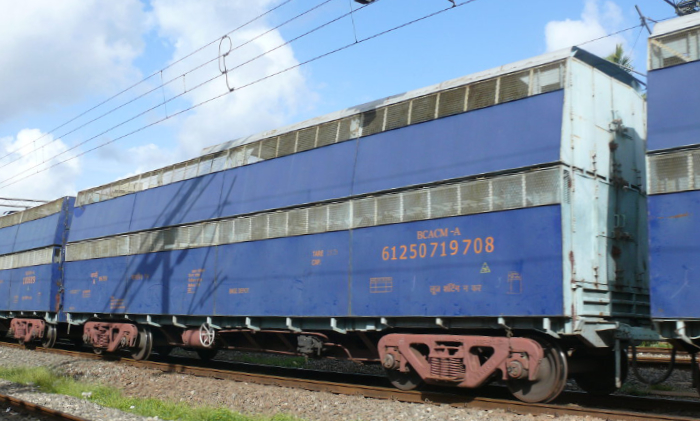
Latest bi-level automobile carrier, based on feedback from car companies. Features an adjustable deck (moving in increments of 50mm). Designed after inputs from Maruti Suzuki about low height of BCACM wagons and roof damage to cars. Lower floor height of 938mm, smaller wheel diameter of 840mm with depressed wheel tracks on LCCF 20 bogies. Self ramps for easier loading and unloading.
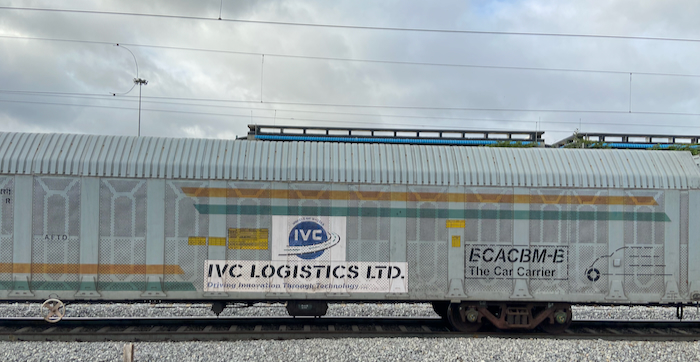
Coupled in units of 9 (2 A wagons at either end, with 7 B wagons in between). 3 such units make up a rake of 27 wagons. A wagon capable of carrying upto 11 cars, with B wagon capacity of 12. Body made of IS 2062 steel. Max axle load is 12.71t. Standard CBC used instead of slackless drawbars between wagons for ease of decoupling and marshalling.
These are not narrow-gauge wagons, despite the classification code! These are single-decker automobile carriers constructed out of old ICF and BEML passenger stock. The design is not entirely uniform but generally all the windows and doors are welded shut, and a new end door created to allow vehicles to be driven into the wagon (or former coach!). A few NMG units converted from old BCCN (cement wagons) have also been spotted. The class code 'NMG' stands for 'New Modified Goods'; but at the time of its introduction it was also common to hear the explanation that it stood for 'New Maruti Goods' (Maruti is an Indian car manufacturer).
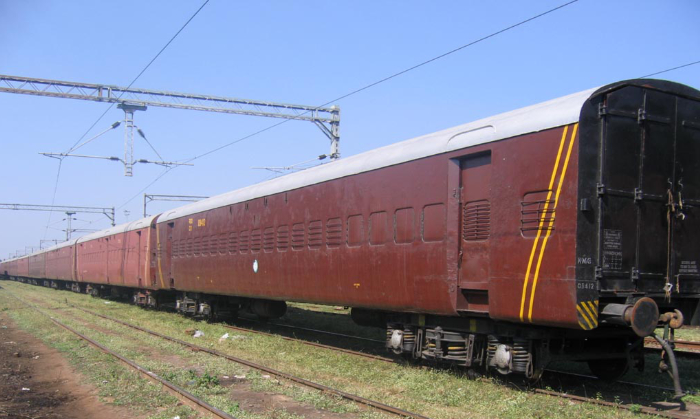
Variants
NMGH: Introduced in 2021, these feature a better suspension to enable 110km/h operations.
Developed in 1992 as an improvement on the older BRH wagon. Air-braked wagon with CASNUB bogies, for rails and steel products and similar heavy loads. These were originally built with 58t capacity but were downgraded to 48t capacity over the years. Fully welded construction.
| Max. axle load | 20.32t |
| Spring grouping per bogie - outer | 12 |
| Spring grouping per bogie - inner | 8 |
| Tare | 24.39t |
| Payload (RDSO spec.) | 56.88t |
| Payload (revised, incl. tolerance) | 63+2 = 65t (RC 13/2007) |
| Gross load (RDSO spec., excl. tolerance) | 81.28t |
| Gross load (revised, incl. tolerance) | 89.39t |
| Capacity | NA |
| Width | 2845mm |
| Height (from rail level) | 2544mm |
| Length over headstock | 13716mm |
| Length over coupler faces | 14645mm |
| Distance between bogie centres | 9144mm |
| Standard rake size | 42 |
| Total train load (incl. BVZC, RDSO spec., excl. tolerance) | 3265t |
| Total train load (incl. BVZC, CC+8+2) | NA |
| Total train load (incl. BVZC, revised, incl. tolerance) | 3589.4t |
| RDSO design speed (loaded) | 75km/h |
| RDSO design speed (empty) | 80km/h |
Variants
BRN22.9: With updated CASNUB bogies for max. axle load of 22.9t.
The main variant of the BRN wagon developed in 1994. Air-braked, CBC couplers, roller bearings. Construction is riveted and welded. Has higher tare to payload ratio.
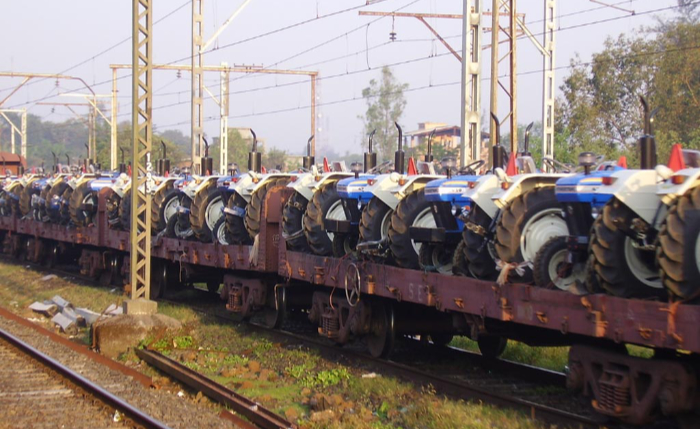
| Max. axle load | 20.32t |
| Spring grouping per bogie - outer | 12 |
| Spring grouping per bogie - inner | 8 |
| Tare | 23.54t |
| Payload (RDSO spec.) | 57.73t |
| Gross load (RDSO spec., excl. tolerance) | 81.28t |
| Width | 2845 |
| Height | 2544 |
| Length over headstock | 13716mm |
| Length over coupler faces | 14645mm |
| Distance between bogie centres | 9144mm |
| Standard rake size (2007) | 42 |
| RDSO design speed (loaded) | 75km/h |
| RDSO design speed (empty) | 80km/h |
Variants
BRNA-HS: Has high-speed CASNUB-HS bogies. Max. speed of 100km/h.
Bogie rail wagon designed specially to work alongside Train Relaying Trains (TRT). Primarily used for transporting RCC sleepers. 20.32t max axle load, with single pipe air brake system and transition CBC.
| Max. axle load | 20.32t |
| Tare | 22.6t |
| Payload (RDSO spec.) | 58.68t |
| Gross load | 81.28 |
| Capacity | NA |
| Width | 3049 |
| Height (from rail level) | 2008mm |
| Length over headstock | 13716mm |
| Length over coupler faces | 14998mm |
| Distance between bogie centres | 9144mm |
| Standard rake size | 41 |
| Total train load (incl. BVZC, RDSO spec., excl. tolerance) | 2406t |
| RDSO design speed (loaded) | 65km/h |
| RDSO design speed (empty) | 65km/h |
Designed in 1998. Special flat wagons for transport of steel (coils, sheets, plates, billets etc.); also used for transporting rail. Air-braked. CASNUB 22 NLB bogies. Max speed of 100km/h.
| Max. axle load | 20.32t |
| Tare | 26.71t |
| Payload (RDSO spec.) | 54.57t |
| Gross load | 81.28t |
| Capacity | NA |
| Width | 2845mm |
| Height | - |
| Length over headstock | 13716mm |
| Length over coupler faces | 14645 |
| Distance between bogie centres | 9144mm |
| Standard rake size (2007) | 42 |
| RDSO design speed (loaded) | 100km/h |
| RDSO design speed (empty) | 100km/h |
Variants
BFNS-M1: CASNUB-HS bogies; 22.9 max axle load; Gross load increases to 91.6t.
BFNSM 22.9: CASNUB-HS bogies; 22.9 max axle load; Reduced lenght and tare weight (23.6t) enable 58 wagon/rake operations. Bogie mounted brake rigging.
Flat wagons meant primarily for transport military vehicles and other comparable loads. Cast steel CASNUB-22NLB bogies with single pipe graduated release air brakes. Max axle load of 20.32t. Transition CBC. Retractable flaps over side buffers for easier loading/unloading. Lashing points provided to pin down vehicles.
| Max. axle load | 20.32t |
| Tare | 25.01t |
| Payload (RDSO spec.) | 56.27t |
| Gross load (RDSO spec., excl. tolerance) | 81.28t |
| Width | 3200mm |
| Height (from rail level) | 1264mm |
| Length over headstock | 13716mm |
| Length over coupler faces | 14998mm |
| Distance between bogie centres | 9144mm |
| Standard rake size | 42 |
| RDSO design speed (loaded) | 65km/h |
| RDSO design speed (empty) | 65km/h |
Flat wagon military vehicle transport (heavy trucks, medium guns and armored batteries). Cast steel CASNUB-22NLB bogies with single pipe graduated release air brakes. Max axle load of 20.32t. Transition CBC. Retractable flaps over side buffers for easier loading/unloading. Lashing points provided on underframe. Suspension via long travel helical springs to minimize dynamic shocks.
| Max. axle load | 20.32t |
| Tare | 29.77t |
| Payload (RDSO spec.) | 35.85t |
| Gross load (RDSO spec., excl. tolerance) | 65.62t |
| Width | 3200mm |
| Height (from rail level) | 1275mm |
| Length over headstock | 18460mm |
| Length over coupler faces | 19742mm |
| Distance between bogie centres | 13890mm |
| Standard rake size | 31 |
| RDSO design speed (loaded) | 65km/h |
| RDSO design speed (empty) | 65km/h |
The most common bogie tanker wagon seen today. Used primarily for liquid petroleum products (petrol, naphtha, kerosene, diesel, furnace oil, etc.), and also for molasses, vegetable oil, etc. Casnub 22 NLB bogies, CBC non-transition coupler. Inside diameter of tanker is 2.85m. 20.32t max axle load. Rated at 75km/h top speed. Older BTP version was vaccum braked.
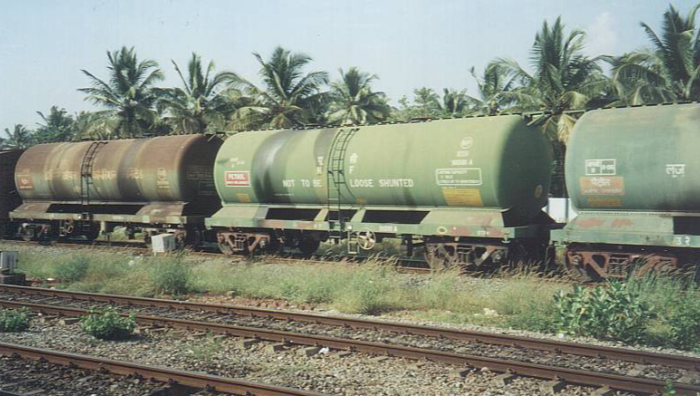
| Tare | 27.0t |
| Payload | 54.28t/70.4m3 |
| Axle load | 20.32t |
| Length over headstock | 11.491m |
| Length over coupler faces | 12.42m |
| Height | 4.265m |
| Width | 3.126m |
| Distance between bogie centres | 8.391m |
| Standard rake size | 47 |
Improved frameless bogie tanker wagon, successor to the venerable BTPN. First introduced around 2004. Used primarily for liquid petroleum products (petrol, naphtha, kerosene, diesel, furnace oil, etc.), and also for vegetable oil and other liquid cargo. The BTFLN wagon was developed by RITES in collaboration with Azovmash of Ukraine. The tankers are frameless and have no center sill. The tractive and buffing forces are taken up by the barrel body itself, so that it is subject to biaxial stresses. The tare weight is lower than that of the BTPN by nearly 3.5t, and the payload is higher for the same axle load. The payload to tare ratio rises to 2.4 with this tanker. CBC non-transition couplers and CASNUB HS bogies.
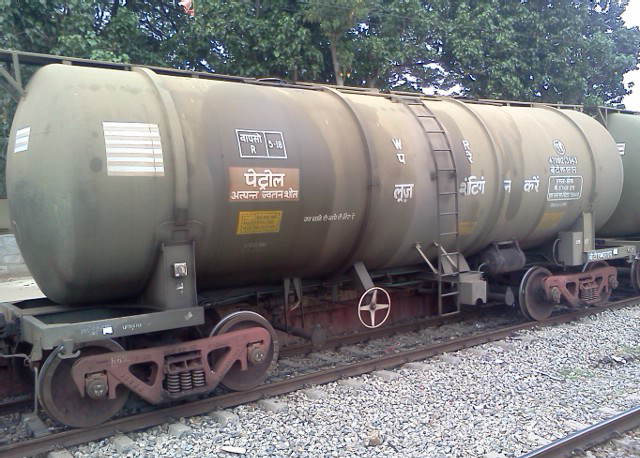
| Tare | 23.53t |
| Payload | 57.95t |
| Axle load | 20.32t |
| Length over headstock | 11.491m |
| Length over coupler faces | 12.42m |
| Height | 4.358m |
| Width | 2.95m |
| Distance between bogie centres | 8.391m |
| Standard rake length | 51 (in 636m loops without saftey wagon) |
Bogie tank wagon for liquefied petroleum gas. CASNUB 22NLB bogie. Body made of ‘mild steel’. Top inlet hatches with discharge valves at the bottom of barrel. Airbraked; rated for 75km/h operations. BTPGL was the older version with vaccum brakes.
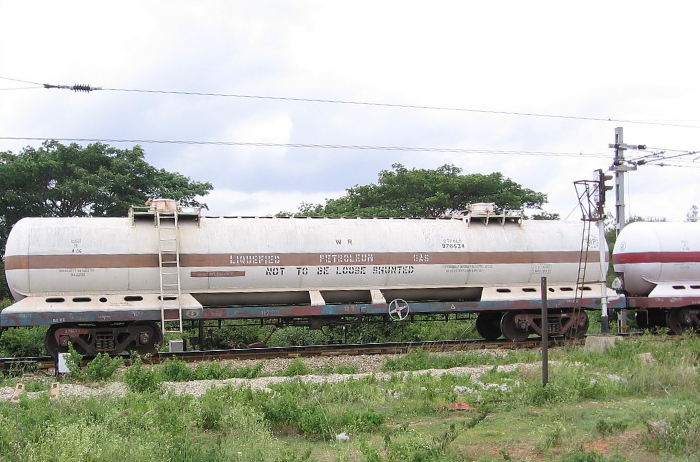
| Tare | 41.6t |
| Payload | 37.6t |
| Axle load | 20.32t |
| Length over headstock | 18000mm |
| Length over coupler faces | 18929mm |
| Distance between bogie centres | 12970mm |
| Height | 4285mm |
| Width of inside barrel | 2400mm |
| Standard rake length | 30 |
Bogie tanker wagon for alumina powder. Leakproof wagon with a special air fluidizing system for discharging alumina powder from the bottom through pipes like a fluid. CASNUB 22 NLB cast steel bogies, AAR 'E' high-tensile coupler with high-capacity draft gear. Air brakes and parking brakes. Rated for 100km/h.
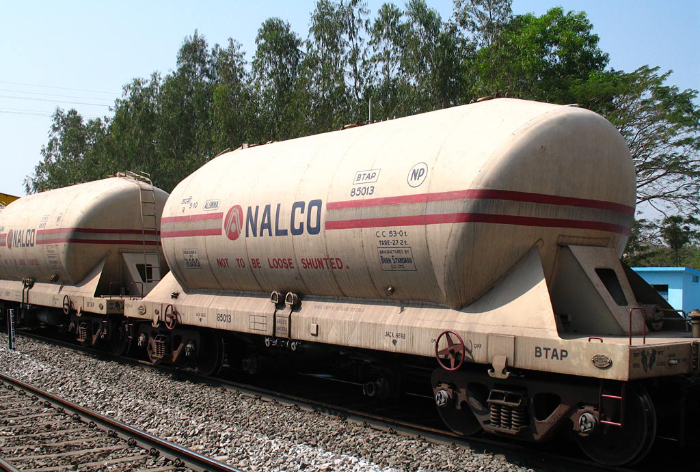
| Tare | 27t |
| Payload | 54.28t |
| Axle load | 20.32t |
| Length over headstock | 11400mm |
| Length over coupler faces | 12329mm |
| Height | 4350mm |
| Diameter inside barrel | 3200mm |
| Standard rake lengh | 44 |
BLC wagons are now IR's standard container flats. (Also known as 'CCF', Coaching Container Flats.) Low platform container flat wagons. These have light-weight welded 'skeletal' design underframes, automatic twist locks, a single-pipe air-brake system, and reduced wheel diameter (for the low beds). The low platform allows them to carry high-cube or Tallboy containers on routes where clearances would otherwise make this impossible.
The wagons come in two flavours. An 'A' type (BLCA, also BLC-A) has a normal (AAR 'E' type) CBC at one end and a slackless drawbar at the other end. The 'B' type wagon (BLCB, also BLC-B) has only the slackless drawbar couplers at either end. 3 BLCB wagons are coupled together, with a BLCA wagon at either end, forming a semi-permanently coupled formation of 5 wagons. The slackless drawbar is lower than the normal couplers, at 898mm, while the CBC are at normal height (1080mm).
Being longer than most other wagons, a rake can only have about 45 of these BLC flats, which at the rate of 2 TEU's per wagon works out to a carrying capacity of 90 TEU's per train.
Newer versions (since 2004) come with an automatic load-sensing device to provide optimum braking power with differing loads.
| Tare | BLCA 19.1t, BLCB 18.0t |
| Length over headstock | BLCA 13.625m, BLCB 12.212m |
| Height | 1.009m |
| Width | 2.1m |
| Wheel dia. | 840mm |
| Distance between bogie centres | BLCA 9.675m, BLCB 8.812m |
| Maximum speed | 100 km/h |
Variants
BLCAM/BLCBM: Modified bogies with upgraded side bearer, upgraded friction wedges and 2 additional springs to enable double stacking. Max axle load of 22t.
BLC-25M (or BLCS): Featuring a higher 25t axle load and swing motion bogies. Made by Golden Rock Workshops.
These are variants of the BLCA/BLCB container flats, with an extra-long 45' (13.7m) platform. They were designed by RDSO and RITES jointly, for transportation of Indian standard 22', 24', and 45' containers as well as ISO standard 20' and 40' containers. The bogie is the 'hybrid' LCCF 20(c) bogie, which along with small diameter wheels achieves a low underframe height. The wagons have twist locks to secure containers.
The BLLA wagons are intended to be the outer wagons in a coupled group of 5 wagons, with the inner 3 being the BLLB type. The outer couplers for the BLLA are AAR 'E' type, and the inner couplers are slackless drawbar couplers.
| Max. axle load | 20.32t |
| Tare | 19.8t (A)/19(B) |
| Payload (RDSO spec.) | 61t |
| Gross load (RDSO spec., excl. tolerance) | 80.8t (A)/80t (B) |
| Width | 2200mm |
| Height | 1008mm |
| Standard rake size (2007) | 45 (18 BLLA with 27 BLLB) |
| RDSO design speed (loaded) | 100km/h |
| RDSO design speed (empty) | 100km/h |
Milk tanker — these are special tankers for carrying milk at 4 degrees Celsius. The milk is carried in an inner barrel of stainless steel, surrounded by an outer barrel with insulation between the two. Pasteurized and chilled milk remains cool enough with such an insulated design so that it does not spoil on fairly long journeys; there is no need for refrigeration equipment. These tankers are attached to express trains and are treated on par with passenger stock, and rated for higher speeds (110km/h) than most freight stock.
40,000 litre capacity; Axle load - 18.275t; Gross weight - 74.9t; Main tanker sits on an underframe made using rolled steel sections riveted together. Transition CBC.
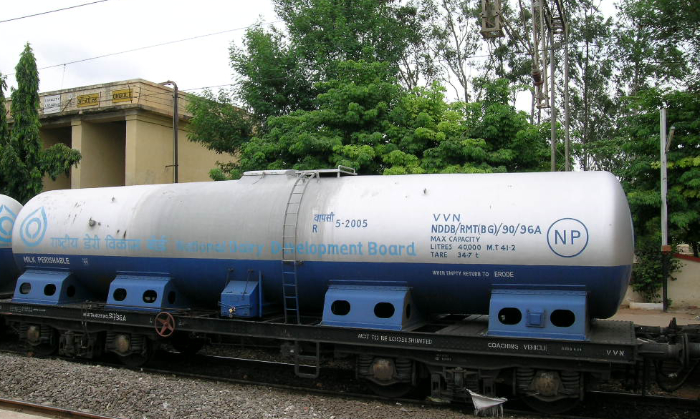
A different kind of milk tanker were the small tankers donated by New Zealand that were in use in the 1980s, for instance on the Miraj-Pune Passenger. Two of these at a time were mounted permanently on a flat car with Flexicoil bogies, creating a two-tanker milk wagon with a single base. These have been decommissioned now. Classification code unknown.
Variants
VVNH1: Enhanced capacity of 44,600 litres on upgraded ICF bogies with stiffer springs and larger wheels (952mm dia.). Maximum axle load increased to 20.32t.
Well wagon used for transporting heavy military equipment like battle tanks, artillery batteries and other heavy vehicles. The underframe is a heavy welded structure, with main girders made of high strength micro alloyed steel (IS8500). Body bolsters which support underframe on bogies are of fabricated box sections to withstand the load. The ends of underframe i.e., head stocks are also welded ‘C’ sections out of plates. Loading flaps are provided over side buffer to facilitate loading of battle tanks. Lashing chains, Track guides & scotch blocks are provided for securing the battle tanks during transportation.
CASNUB-22NLB cast steel bogies with updated friction damping and helical springs. Wheel diameter of 1000mm. Max axle load of 22.9t. Rated for max. speed of 65km/h.
Heavy-duty well wagon, for loads up to 220t such as large transformers and power plant equipment. Tare 146t, payload 220t (some versions are limited to 180t). Length 37.81m, width of carbody 3.74m. Screw coupling. Cast steel bogies. No continuous brakes on most, parking brakes only. Limited to about 40km/h.
Lighter version of BWZ, used for moving transformers and heavy electrical equipment. Max payload of 92t. 3-axled bogies, 22.9t axle load, 20.47m long.
8-wheeled brake van that replaced the 4-wheeled BVZC. Resting on ICF coaching bogies, these are 5m longer than the 4-wheeled counterparts. They were designed to increase the comfort level of guards who often complained about poor ride characteristics, despite sharing ranks with the much more comfortable loco pilots. Interiors feature improved seats. Airbraked, tight-lock CBC, max speed of 100km/h.
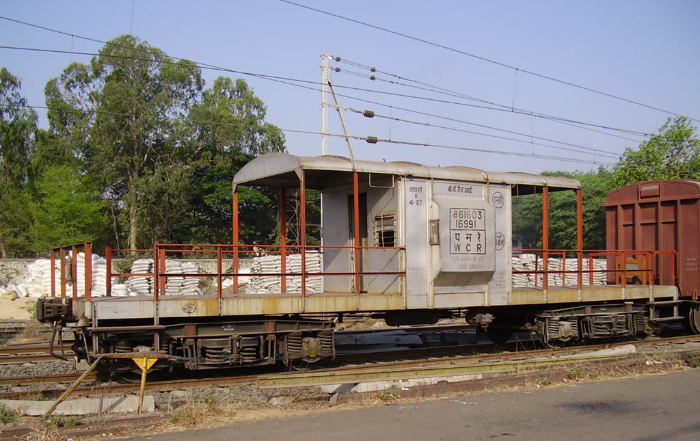
Rare wagons
These wagons were either produced in limited numbers or have been almost withdrawn from wider service. Some may even have been scrapped.
BFKN
Container flat car for ISO containers, with retractable anchor locks. Originally used by CONCOR before switching over to BLCA/BLCB flats. CASNUB bogies. Vaccum braked versions were BFKI.
BCCN/BCCNA/BCCNB
Automobile Carriers. A few wagons also marked BCCN like the older cement carrier. These have a low platform with 840mm wheel diameter and are fitted with air brakes. The explanation of the class code is that they are thought to have been made by taking old BCCN wagons and modifying them. They were built in 1997 by the Golden Rock Workshops based on designs from RDSO, and were intended to carry Maruti brand automobiles.
BCCNR
Automobile carrier wagons introduced in 2004. these are single-deck covered wagons with 10t capacity and 28.5t tare weight, and a low platform with 840mm diameter wheels. Some of these were limited to 65km/h but later were apparently approved for 100km/h. These were designed to capture more automobile traffic, especially from the south where many automobile plants are, following the introduction of different car models by various manufacturers in recent years which could not be carried on the original wagons. BCCNR wagons are not thought to number more than about 35.
BTCS
Bogie tanker car for caustic soda. Width 2.56m, height 4.11m. Inside diameter 2.3m. CASNUB bogies, CBC.
Other variants of the same design include BTSA (for carrying Sulphuric Acid), BTAL (for carrying Anhydrous Ammonia).
HTC
(Non-standard classification code) BG Long Covered Wagon, for defence use. Screw couplers and side buffers, CASNUB 22NLB bogie, air brakes. Has a 'hood transfer mechanism'.
BVZC
Fur-wheeled brake van, with CBC. Once the main type of brake van, these have been superseeded by the BVZI (see above). Some are still found on departmental, engineering and other works trains.
Old, obsolete wagons
Note: This is a partial list. Please refer to this document for the full list.
BOX
High-sided bogie open wagon. Side discharge arrangement. 55 ton capacity, 25 ton tare. Used for coal and other bulk goods. BOXT, BOXR, and BOXC are the same with transition, screw, and CBC couplers, respectively.
BOXS
BOX wagon with side discharge/flap doors and siding roof.
BCN
Bogie covered 8-wheeler wagon, CASNUB bogies, air-braked, CBC. Originally developed in 1984 for carrying bagged commodities. Original model had entirely riveted construction. Predeccesor to BCNA.
BCX
Water-tight covered high-sided bogie wagon with cast steel bogies. Cartridge taper bearings on newer ones. Snubbers and nested coil springs under bolster, elastomeric pads, with secondary suspension system. Used for foodgrains, cement, etc. (BCXT, BCXR, BCXC are variants with transition couplers, screw couplers, and CBC).
BFK/BFKX
Early version container flat car. The 'X' version had CASNUB bogies.
BTORX, MBTORX
Bogie tanker wagon for vegetable oil, and its MG variant.
BVG, BVGT, MBVG, NBVG
Brake van for non-block rakes. BGVT is the same with a transition coupler. MBVG is the MG version and NBVG is the NG version. 4-wheeled.
MBC, MBCX
MG bogie box wagon, 34 ton capacity, 13.4 ton tare
MBOC, MBOCX
MG bogie open wagon (coal, etc.), 35 ton capacity
MBTW
MG bogie water wagon
MBTPZ
MG bogie petroleum products wagon
Additional notes
Several of these wagons use ‘CASNUB’ bogies. These are cast-steel bogies with friction-damping arrangements (hence the name, from ‘CAst steel SNUBber equipped’). These come in some variants, e.g. CASNUB HS is a high-speed variant allowing speeds up to 100km/h, CASNUB 22 NLB has additional correction and friction damping mechanisms, CASNUB HA has higher payload capacity, etc.
Milk vans, because of the perishable nature of their cargo, have the curious privilege of being treated as passenger coaching stock with corresponding speed limits. Milk vans are often attached to passenger trains and are rated for 110km/h. The older ones were vacuum braked and were limited to 100km/h.
In the past, some older 4-wheel (non-bogie) tank wagons (TK, TP, etc.) were being re-used in an inventive way: the tank and part of its base was fitted on to a frame that matched the shape of a half-size standard ISO container frame and which was then carried on normal container flat wagons. This allowed the tank and its frame (which still had years of useful life left) to be used even though the original 4-wheeled wagon base was scrapped.
EMU stock has often been converted by IR for use in carrying goods, by sealing the windows and removing all interior fittings.
Special-purpose wagons of various kinds have been used by IR. Some 24-axle threaded beam well wagons and 18-axle well wagons with integral brake vans at either end are used by BHEL for transporting large transformers. BHEL, Trichy, has a 24-axle saddle wagon named ‘Kaveri’ for transportation of large electrical equipment. It also has an 18-axle well wagon.
The Atomic Energy Commission has(d?) some 12-axle and 16-axle saddle wagons as do a few other heavy industrial concerns, power companies, NPC, etc. A 20-axle well hole wagon was built specially for GEC Alstom's use in transporting large electrical equipment. Several of these multi-axled heavy wagons were built by Golden Rock workshops. ‘Merry-go-round’ wagons used at power plants and mines can tilt sideways to unload their contents as each wagon in the rake passes by.
Q. How are freight cars numbered on IR?
In 2003, when freight operations were computerised, IR switched to a 11-digit numbering scheme for all wagons to maintain uniformity and keep track of wagons.
The first two digits denote type of wagon, the third and forth indicate owning zone, the fifth and sixth denote year of manufacture, the seventh to tenth digits the individual wagon number and the last is a Check digit. The Check digit is an additional method to make sure the wagon numbering is truly unique in case of manual errors during overhaul and recommissioning. The method to calculate this digit is complicated and beyond the scope of this document. Readers interested in the details are encouraged to search for the relevant information on various IR websites.
Q. How many freight wagons does IR have in its fleet?
As of 2019, IR had 289,115 wagons.
PER Goods Wagons
Until the mid-1990s or so, it was not uncommon to see wagons with the marking 'PER' in regular service in freight trains on IR, especially in the east. These were wagons from the former East Pakistan (PER = Pakistan Eastern Railway) which were taken and deployed for use by IR during the 1971 hostilities with Pakistan. Many of these remained in India afterwards, and were in use until the 1990s, after which most of them were scrapped. As the PER stock was not particularly different from the standard wagons used on IR, they could be used interchangeably with the normal freight stock on the BG lines.
Q. Where are IR's freight wagons manufactured?
Most wagons today are manufactured by private firms such as Titagarh Wagons, Texmaco Rail & Engineering, Jindal Rail Infrastructure, Hindustan Engineering, Modern Industries, BESCO and Jupiter Wagons.
Public-sector organizations such as Burn Standard Co., Braithwaite, Jessop, Bharat Wagon and Egg. Co used to manufacture wagons in the past, but privatisation, liquidation etc. has meant that only Jessop (now once again privately owned) and Braithwaite make wagons now. (Many of these used to be private concerns but were taken over by the state.)
A small fraction of the wagons come from IR workshops such as those at Golden Rock, Amritsar, and Samastipur. Golden Rock especially has built quantities of many different kinds of wagons over the years, and in the early days of container operations made large numbers of the BLCA/BLCB container flats needed by CONCOR.
Brakes
Q. What kinds of brake systems do IR coaches and freight cars have?
In both passenger coaches and freight wagons, the continuous braking system consists of air brakes. The guard often has mechanical brakes acting on his van. In addition, each piece of stock has mechanical parking brakes.
Air brakes are of the twin pipe system, with a feed pipe and a brake pipe. In the initial days of air-brake introduction, single-pipe systems were used, but were quickly converted to twin. (The twin pipe system fixes a problem with the single-pipe system where the air in the auxiliary reservoir can be used up faster than the brake pipe can charge it.)
BG EMU rakes have electro-pneumatic (‘EP’) brakes which are essentially air brakes, but where the application is controlled electrically at each brake unit. BG EMUs have had air brakes for many decades. MG EMUs of the Chennai system were vacuum-braked. DMU rakes have standard twin-pipe graduated release air brakes.
Until the late 1970s and the early 1980s, air brakes were rare. Vacuum brakes were the most commonly used continuous braking system on IR. Perhaps the most notable ‘convert’ at the time was the Mumbai Rajdhani which switched to being air-braked in 1984, hauled by twin WDM-2 locos. The Howrah Rajdhani also switched to being air-braked around 1986.
Continuous brakes were tried out by the various railway companies in the late 19th century. North Western Railway was the pioneer with trials of continuous vacuum braking in the late 1880s and early 1890s. Vacuum brakes were chosen for the simplicity of design and lower cost. They also did not have coupling cocks that could fail mid-train.
Early examples of the use of air brakes on IR include the Metro Cammell EMU stock delivered between 1951 and 1953 (and similar stock later delivered by other manufacturers), which featured the Westinghouse twin pipe air brake system and electro-pneumatic application (the 1924 and 1928 EMUs (CR and WR) were vacuum-braked).
Sahyadri, Maharashtra, Koyna, Toofan and the Bokaro/Tatanagar - Alleppey Expresses were among the last trains to run vacuum braked stock (these were converted to air braked during 2003-2004). In early 2005, the Viramgam Passenger was perhaps the longest train to be a holdout and still ran vacuum stock, including a 2AC coach from the late 1960s!
Dual-braked passenger coaches were rare, but some did exist, including sleeper coaches and AC 3-tier coaches; most of these were not for general use but are saloons, inspection cars, or officer's cars, which needed to be attached to either air-braked or vacuum-braked rakes.
MG and NG coaches were predominantly vacuum, but later ones were all converted to air braked.
Air brakes are among the most significant changes undertaken by IR in recent decades. They have allow much higher speeds on most sections as trains can be safely braked in a shorter distance, leading to better track utilization. Earlier, for instance, it was standard practice to begin braking at an Attention signal (double yellow); now most trains speed past an Attention signal at the highest permitted speed and begin braking only when a Caution signal is sighted. Safety has also increased with the power and precision of air brakes.
Changing locomotives is now a matter of minutes - the angle cocks are closed, the locomotive is detached, the new one attached and the cocks are opened once again. Earlier, disconnection of the vacuum hose meant that all the brake pistons under the coaches went into emergency mode and had to be manually released (by pulling a wire loop — usually marked with a star — under the coach). The process of releasing the brakes would easily take around 15 minutes for vacuum-braked stock.
Brake blocks used to be made of cast iron. Later, various other materials were brought into use, including asbestos-based materials. In April 2001, RDSO has developed new kinds of asbestos-free composite materials for use in brake blocks. These are known as the 'L' type brake blocks and after being introduced for BG, were introduced on MG in 2005.
LHB coaches have disc brakes.
Q. What kinds of brake do IR's locomotives have?
Locos in IR have air-brake systems and all new locomotives manufactured since the mid 1990s have only air brakes as the original equipment.
In the transition decades of the 80s and 90s, many locos had dual braking capabilities as there was still a lot of freight stock (and to a lesser degree passenger coaches) that was vacuum braked.
For instance, the original WDM-2 locos were vacuum-braked. As air braked stock came into wider use, many of these locos were retrofitted with air brake systems as well, hence the sub-class WDM-2A which had dual braking capability (this class is now scrapped). Later locos such as the WDM-2B, most WDM-2C(3A) units have only air brakes.
The presence of air brakes or dual-braking capability was indicated by a number of ad hoc means, such as annotations (‘DB’, ‘Dual Braked’) or markings (thin blue stripes running along the bottom of a loco, for instance).
The annotations ‘FP’ and ‘BP’ on a loco indicate the presence of the Feed Pipe or Brake Pipe, respectively.
Various forms of ‘dynamic’ braking are also used as supplementary systems where the kinetic energy of the loco is used to generate electricity which is dissipated in some manner (resistive grids are common (‘rheostatic braking’ or ‘dynamic braking’); some old EMUs in Bombay used electromagnets acting close to the rails; some locos used the extra energy to heat water in tanks).
In some locos dynamic brakes are part of the original equipment, whereas in others they are retrofitted, e.g., some WAP-4 locos have dynamic brakes with dissipation grids mounted on their roofs.
In a variant known as ‘regenerative’ braking, the energy is fed back to the overhead cables; this was done by the DC locos (WCM series, definitely WCM-1 but not all of its successors). Feeding energy back to the cables is more complex with AC power, but the latest WAP and WAG series locos have provision for this.
Q. What are ‘auto-emergency’ brakes?
Many locos used in steep ghat sections also have an ‘auto-emergency’ (‘AE’ or ‘AEB’) brake system, which consists of an additional safety circuit which monitors the speed and applies the brakes to slow down or halt the locomotive if the speed rises above a certain threshold (sometimes 25km/h or so, but this varies with the route and the working rules in effect).
There isn't a separate set of brakes, but rather, the loco brakes are applied independent of the driver's control when the system is armed. The system is armed by using a key that the driver then hands to the guard. If the brakes trigger automatically, the key has to be retrieved from the guard and used again to get the train going (and a lot of paperwork has to be filed as well!).
AE brakes are used especially on locos from Hubballi and Gooty sheds that work the Braganza ghat. The AE brake system is armed when the locos are going in the downhill direction; its use is mandatory as there are no other safety features such as catch sidings on this route.
Couplers
Q. What kinds of couplers are used on IR's trains?
IR’s passenger stock uses two types of couplers. All LHB stock have tightlock CBC (centre-buffer-coupler). Some newer ICF stock also use CBC, but the majority of ICF stock are equipped with screw couplers and side buffers. Screw coupler passenger stock is no longer being manufactured.
CBC equipped ICF stock started as an experiment in the early 2000s. One rake of the Prayagraj Express was fitted with CBC as a trial. CBC overcome some of the limitations of the screw couplers — limited draft load and energy absorption capacity, lack of anti-climbing feature, etc. CBC would also reduce the inter-coach distance.
All new freight stock and container rake wagons for CONCOR, have CBC (MCB (or 'Janney' or 'knuckle' (US style) couplers). In particular newer freight stock has AAR type 'E' CBC usually with high-capacity draft gear. The older freight stock had hook couplers with side buffers, as well as with screw couplers.
Transition Couplers: There are also ‘transition’ couplers, which have a CBC mechanism for coupling to other CBC, but which also have a central screw coupling provision allowing coupling to wagons which do not have CBC. There are two side buffers provided as well. These were useful when CBC were just being introduced and there was a lot of freight stock that had screw couplers, but they have now gradually lost their importance as more and more of the freight stock is fitted with CBC. These days only locos and brake vans tend to have transition couplers. Older BOX wagons, older diesels (many WDM-2's) and other older rolling stock had Henricot Transition Couplers with a double screw arrangement. Somewhat newer rolling stock had the so-called Alliance or Clevis Transition Coupler. This had a clevis to be locked under the knuckle before using the screw coupling. A locking pin indicates whether the CBC portion is properly coupled or not.
Plate Couplers are temporary or short-run couplers that can be used to couple locomotives without CBC couplers to CBC-fitted wagons. Pocket Couplers, similarly, are used for temporarily coupling incompatible wagons. Both of these types of temporary couplers do not perform well in practice. They were also generally in short supply at marshalling yards and elsewhere. The move to block rakes of CBC wagons in the 1980s greatly reduced the demand for these temporary coupler types. These type of couplers are no longer used on IR.
The Jones Coupler (an adaptation of the Norwegian coupler) is used on MG and some NG lines. Also known as the chopper coupler, this uses a hook (the chopper) which fits into a yoke on the coupler of the next car. A bar behind the yoke controls the tension in the coupler. MG wagons and coaches have the chopper at one end and the non-chopper coupler at the other end, hence a rake of MG wagons has to have them all oriented in the same way.
MG locos have the choppers at both ends. When coupling a loco to a wagon, the loco's chopper is used if coupling to the non-chopper end of the wagon, but the wagon's chopper is used if coupling to the chopper end.
Jones couplers were developed in India and later spread to several East African and South-East Asian railways. Some NG lines used a basic Norwegian (or 'chopper') coupling, which had a square or circular face with a slot coming down about half-way from the top.
Other NG lines used the ABC Patent Coupling (ex-GIPR: Arvi-Pulgaon, Achalpulpur-Murtijapur-Yavatmal, Daund-Baramati, etc.). This had a disk that rotated and latched on to a horizontal loop from the mating coupler. The Darjeeling Himalayan Railway uses a rudder coupling system to deal with the severe curvature on some sections of its route. However, the Kishanganj branch of the DHR used chopper couplers, as can be seen on the DHR C class Pacific at Mumbai and the lone Garratt made for this line.
EMUs use Scharfenberg Couplers which are a centre-buffer type which automatically connect the electricity and air links as well. The coupler face is rectangular (from above) and has semicircular ends. A large pin projects from the end of the coupler, which mates with a corresponding hole in the coupler of the other car. DMUs also use these couplers with regular twin brake pipes, although in some cases (e.g. Jallandhar DMUs) they are modified to have different brake hoses than the integrated ones that are part of the couplers. In IR parlance, these couplers are called ‘Shaku’ couplers.
Screw Coupler Limitations
The screw couplers in use on passenger stock have some pretty restrictive limits on the tensile force they can handle. Below are the starting load limits specified for BG stock using screw couplers on different gradients:
| Gradient | Rake weight |
|---|---|
| Level | 7000t+ |
| 1 in 500 | 5000t |
| 1 in 200 | 2800t |
| 1 in 150 | 2250t |
| 1 in 100 | 1700t |
With gradients of 1 in 60 or 1 in 50, the allowable load is as low as 1000t or less, which means that most Mail and Express trains running today, with 17-18 coaches or even longer rakes, need bankers for such gradients.
Buffers
The side buffers typically used on locomotives, coaches, and wagons mostly use helical springs with rubber or synthetic compression elements. Some buffer designs rely entirely on multiple packs of rubber compression packs. Previously, helical springs were the only mechanisms for compression resistance.
Buffer capacity in the past was low, at about 450kgf-m and the standard loco buffer having a capacity of 490kgf-m. Higher capacity buffers of 1030 and 1225 kgf-m have been introduced and RDSO's most recent design is for a buffer of capacity 1225kgf-m.
History of couplers in India
Originally, Indian coupling consisted simply of chains — one in the middle and one on either side as back-ups — and buffers that were extensions of the side structural members of the coaches (“dumb” buffers) for freight cars. Passenger cars often had buffers filled with materials like horsehair.
Spring buffers were employed from about 1850, starting with under-wagon leaf spings, and evolving into the modern coil-spring buffers that contain the spring mechanism inside the buffer body.
Five-link and 3-link chain couplings survived into the 20th century, especially for low-speed (under 40km/h) operations. The linking chains evolved to have a screw mechanism (hence “screw coupler”) to keep buffers of adjacent cars touching and slightly in compression so as to provide a smoother transition on starting a train. By the 1920's chain couplings almost all disappeared, especially as vacuum braking came into wide use.
The only steam class with automatic couplers were the WGx subclass used for heavy freights on SER.
In 1980, IR made the move to using block rakes of CBC wagons as far as possible for goods movement. This meant that the problems of coupler incompatibility among wagons and among locomotives and wagons at marshalling yards and elsewhere were greatly diminished.
Power Generation - Lighting and Ventilation
Early trains
The earliest passenger coaches had no lighting at all, and passengers were expected to bring their own candles or lamps on board. In the later decades of the 19th century and in the early 20th century, the most common lighting provision was through gas lamps (more common) or vegetable oil lamps. Electric lighting in passenger coaches was introduced starting around 1897, although it had been tried out experimentally a few times before that. The Jodhpur Railway was the first to make electric lighting standard on all its coaches, in 1902, along with an electric bell system to alert an attendant or the guard in case of an emergency. In general, only the first and second class coaches had lights and fans for every compartment, the ‘inter’ or intermediate class had only lights, and the third class coaches had just two lights, one at each end near the door. Provision of lights and fans as standard equipment in all compartments was legislated in 1952.
It has been suggested that on some railways prior to 1950, steam locos were provided with 24V turbine generators to provide power for lighting in the coaches, but it is hard to find confirming evidence for this, and if true, must have remained confined to a few isolated experiments.
Self generating stock
Most ICF design (and a limited number of LHB) coaches are labeled Self-Generation (SG). These are powered by axle-driven generators which charge storage batteries that power lights, fans and other electrical fittings. Coaches have 110V circuitry and use belt-driven 4.5kW, 110V alternators (Air-conditioned LHB stock of this nature use 6.5kW).
Back-up power is provided by banks of 24V batteries (mostly lead-acid batteries of an 1100Ah capacity (800Ah batteries previously)).
Older coaches had 24V (less often 48V) circuitry and had dynamos connected to the axles by belts. These also had 24V battery banks as a back-up. Conversion to 110V circuitry got a big push in the 1990s.
Railbuses such as the ones manufactured by BEML use a 24V electrical system.
Air-conditioned coaches
Air-conditioning equipment is powered by two 25kW 110V alternators, with the voltage being converted to 415v AC. Previously 110v alternators delivering 11-22kW were used, and even before these 11kW/15kW ones were used. Most air-conditioned coaches in the late 90s had just a single alternator. Lights and fans are in AC coaches are often on a separate DC supply from batteries, or stepped down and rectified from the alternators.
End-on Generator stock
In the LHB stock and older ICF stock used on Rajdhani, Shatabdi, Garib Rath etc. electricity is supplied by the use of a separate ‘power-car’ (increasingly replaced by hotel load supply from locomotives, see below) at each end of the rake.
There are usually 2 generators in each power car; each generator (an End-on Generator (EOG)) uses a 750kVA power pack to generate 3-phase 750V AC power, which is then distributed across the train, and stepped down to 415V AC (3-phase) for the air-conditioning, or 110V (single-phase) for other appliances. Each power car at one end of the rake provides power when the train is running in one direction while the other operates in the other direction.
In the past 500kVA and 250kVA sets were used. The 250kVA ones could power upto 18 AC coaches, but their peak efficiency was at a load of 7 to 12 coaches, so for longer trains, both EOG were on simultaneously.
The 250kVA power cars were introduced in 1992. Before that the power cars in use had a capacity of 125kVA and used 440V as the AC distribution voltage. With these, most Rajdhanis and Shatabdis needed three power cars -- one at either end, and one in the middle of the rake, which split the rake into two portions (termed 'Unit I' and 'Unit II'). As the power cars are (were) not equipped for anyone to walk through, there was no way to get from one portion of the rake to the other while the train was in motion.
The two EOGs and the coaches along the length of the train are connected by two independent sets of 3-phase cables so as to be able to handle a failure in a cable. In addition, there are usually 24V batteries in the coaches to power a couple of emergency lights at critical points in the coaches.
Head-on Generation
In this system, power is supplied from the locomotive at the head of the train, hence the term Head-on Generation (HOG). These were under consideration for a long time by IRIEEN and RDSO, but became more common (in fact, now almost all LHB stock is powered this way) when WAP-7 locomotives were fitted with upgraded transformers and hotel load windings. Some WAP-5 locomotives also are HOG capable.
Power is drawn directly from the main 25kV traction transformer. This transformer is provided with two hotel load windings which power the two hotel load converters that supply 750V AC which are then stepped down as in described above.
In the case of diesel locomotives, the three phase converter is mounted on the traction alternator and feeds the hotel load. Only a few WDP-4B locos were fitted with the equipment, but recent reports (02/2021) say these have been removed.
In these rakes, a power car is still part of the consist as a backup. The additional one used in a pure EOG setup is now taken over by a revenue earning coach.
With increasing stock of LHB coaches and electrification, IR plans to eventually run almost all its passenger services using the HOG system.
EMUs/MEMUs/DEMUs
EMUs use the 25kV AC overhead supply, step it down to 110V AC and supply to the coaches. DEMUs are usually powered by auxiliary generators.
DC EMUs in Mumbai used a motor generator to convert the 1500V DC power to 110V AC.
Miscellaneous
Q. Freight stock often has the words “Not to be loose shunted” –– what does this mean?
In marshalling yards and elsewhere, a common technique of moving a wagon around is “loose shunting”, where the wagon to be moved is not coupled to the shunting loco, and simply pushed to the correct location.
Usually, a rake that is being built up is on one of several sidings branching off from a section of track where the shunting loco is working. The points are set to divert all wagons to the appropriate siding. The shunting loco pushes the wagon and imparts it sufficient speed so that it travels over to the selected siding under its own momentum. Once it reaches the rake that it is to be attached to, the “khalasi” staff couple it up to the rake.
The loco driver has to judge the distances and the weight of the wagon precisely so that the wagon does not stop short of the rake (which would necessitate using the shunting loco again to push it further), and so that the wagon does not have too much momentum which would cause it to crash into the rake being assembled with undue violence. Nevertheless, this process of loose shunting does involve a certain amount of violent impacts on all the wagons involved.
Such impacts are not desirable for wagons that are carrying sensitive cargo, such as cattle, poultry, or even human passengers in the case of sectional carriages being reattached to rakes, and extremely dangerous in the case of cargo such as petroleum products where an impact can cause leakage and ignition of the cargo with disastrous consequences. Hence, such wagons are marked “not to be loose shunted”, implying that they will always be shepherded gingerly into place coupled to a shunting loco.
